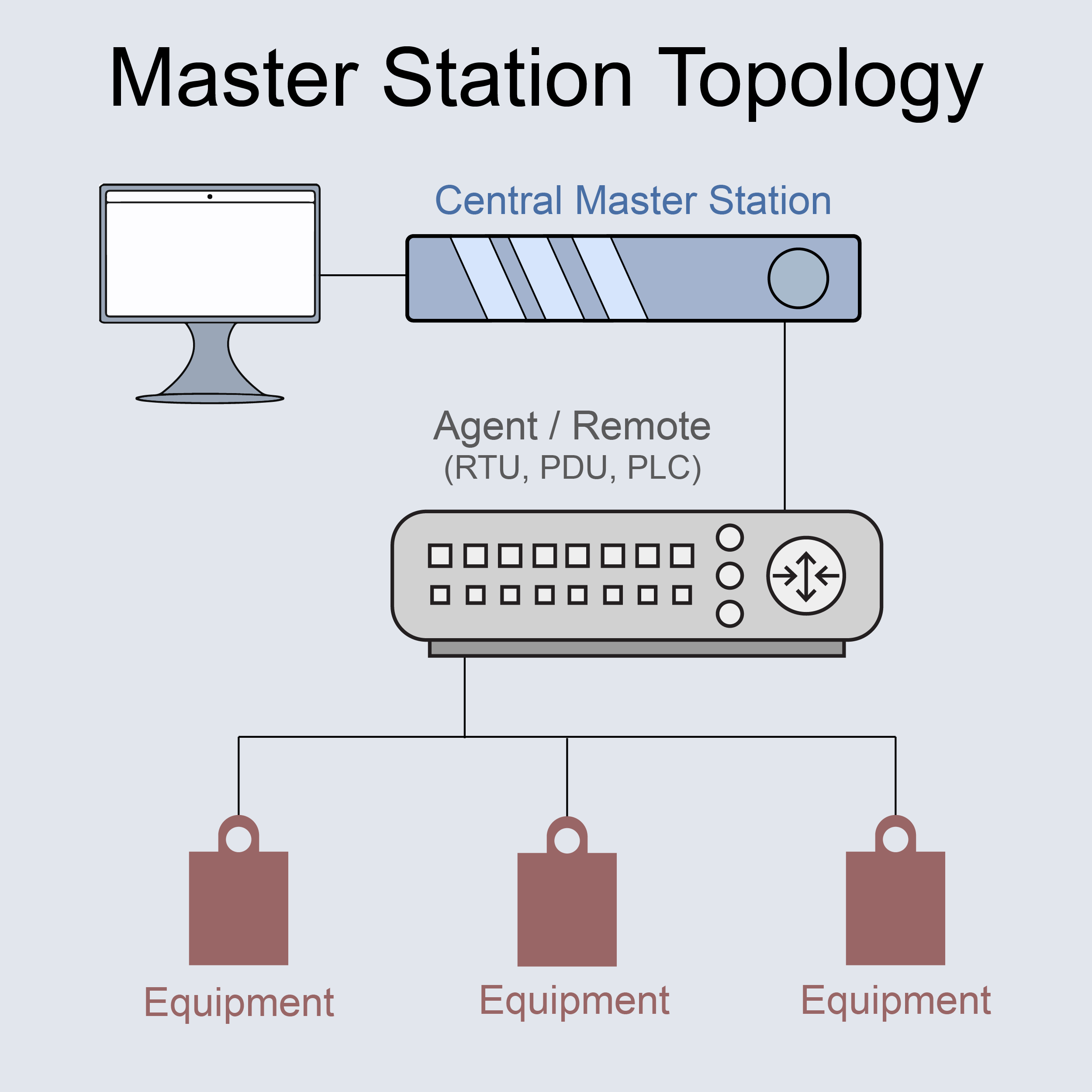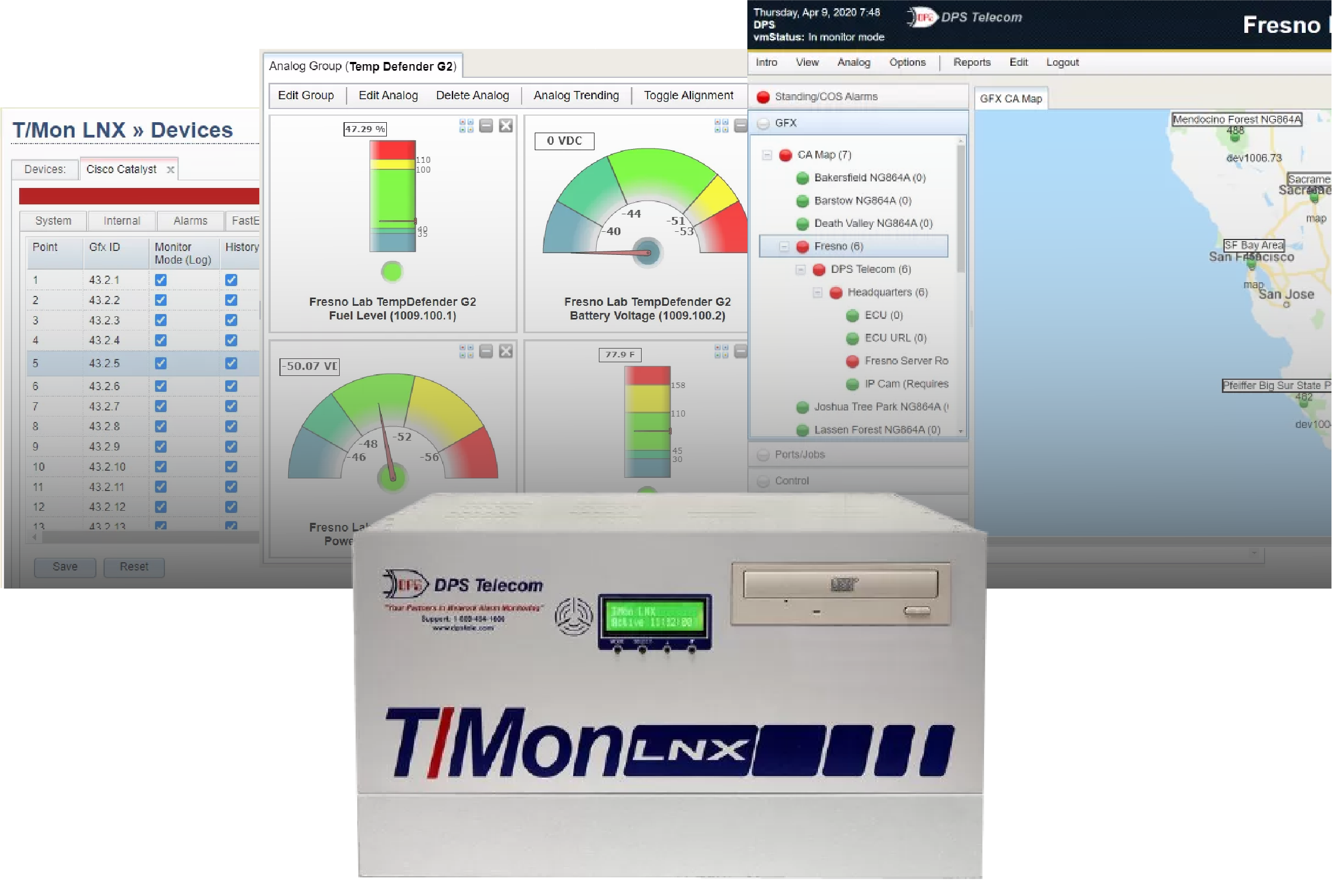Check out our White Paper Series!
A complete library of helpful advice and survival guides for every aspect of system monitoring and control.
1-800-693-0351
Have a specific question? Ask our team of expert engineers and get a specific answer!
Sign up for the next DPS Factory Training!

Whether you're new to our equipment or you've used it for years, DPS factory training is the best way to get more from your monitoring.
Reserve Your Seat TodayManaging a complex network can feel overwhelming, especially when multiple devices are involved, each generating their own set of alarms. Without a unified system, network operators are often left unsure, having to make an educated guess about where an alarm is going off. This can lead to serious (both legal and costly!) consequences.
The concept of having a central master station, or a "single pane of glass", for alarm monitoring is crucial for maintaining network health. Together now, we will explore an interaction between DPS engineer Andrew and a client to learn:

In networks without a centralized master station (or with multiple masters), operators are forced to monitor different devices through individual systems. This can mean running multiple vendor-specific tools or relying on basic SNMP managers that lack detailed alarm capabilities. For many, the result is a messy array of platforms that each handle alarm data in their own way - without providing a complete picture of what's happening.
Operators facing this scenario often struggle with alarm overload, especially when multiple issues arise at once. With no single source of truth, alarms can become lost in the noise. That leads to delayed responses.
The lack of detailed alerts also forces operators to spend valuable time investigating issues, rather than having a clear action plan from the start. This manual process is prone to errors, miscommunication, and wasted time. Technicians may be dispatched to sites with incomplete information.
Managing a diverse network with different types of equipment often leads to compatibility issues. Many systems don't communicate well with each other, requiring operators to switch between different interfaces to track and acknowledge alarms.
In these environments, it becomes nearly impossible to maintain the kind of network-wide visibility that's necessary to prevent outages or downtime.
To address these challenges, many companies try to patch together their own solutions. Some attempt to build custom scripts or dashboards that pull alarm data from multiple systems. Others may rely on their SNMP manager to handle alarms from all devices, hoping this will be enough to centralize their monitoring.
Unfortunately, these approaches often fail to accomplish the needed result.
For example, custom scripts can quickly become outdated or break when vendors update their hardware or protocols. These scripts also require ongoing maintenance and technical expertise, which many teams don't have the resources to manage effectively. In the end, this creates more work without providing a reliable solution.
SNMP managers, while widely used, tend to lack the depth of alarm detail needed to manage complex networks effectively. They often deliver only basic information, requiring operators to dig deeper into each issue before they can respond.
This can lead to slower reaction times and increased downtime, especially in environments where multiple alarms are triggered at once. The limitations of SNMP managers in providing detailed alarm messages also force operators to investigate alarms manually, slowing the response process.
In the end, these quick fixes only mask the real problem. You need a truly integrated system that can consolidate all alarm data into one place and provide real-time visibility across your entire network.
What companies truly need is a comprehensive monitoring system that can act as a central master station, pulling together alarm data from all devices across the network. This system should give operators a clear view of all network elements - regardless of vendor or protocol - and present this data in a single, unified interface.
A good central monitoring system will be capable of collecting alarms from different devices, consolidating them, and displaying the information in a way that's easy to interpret and act upon. Ideally, the system should support a wide range of protocols and device types to ensure compatibility with both legacy and modern equipment. This removes the need for multiple monitoring platforms. That allows operators to focus on resolving issues rather than managing different systems.
The right solution will also offer detailed alarm messages. These notifications include precise information about what is wrong and where the issue is occurring. This level of detail allows operators to act immediately without needing to investigate further. Additionally, the system should be able to handle alarms from both proprietary systems and third-party devices, providing the flexibility to manage a diverse array of equipment under one roof.
Another important feature is scalability. As the network grows, the monitoring system should be able to expand along with it, allowing additional devices and alarms to be easily integrated. A flexible, scalable system helps businesses adapt to changing network demands without big & expensive overhauls.

The T/Mon LNX is a good example of a central master station designed to collect and consolidate alarm data from multiple sources, giving operators a "one pane of glass" view of their entire network.
The T/Mon LNX is built to integrate alarms from a wide variety of equipment, including third-party devices that use SNMP or proprietary protocols. This versatility makes it an ideal solution for businesses that manage complex networks with a diverse array of devices. Instead of juggling multiple systems, T/Mon consolidates all alarms into one place, offering operators an easy-to-read interface that organizes and prioritizes alarms in real time.
T/Mon doesn't just gather alarms - it also provides the detail needed for quick decision-making. Each alarm message includes relevant information about the problem, so operators can respond immediately without the need for further investigation. With support for over 25 protocols, T/Mon can manage both legacy equipment and the latest devices, maintaining comprehensive coverage across the entire network.
For businesses aiming to scale, T/Mon LNX is built to grow with your network. It allows you to add new devices and alarm points without interrupting your current operations. This way, as your network expands, T/Mon can maintain the same high level of visibility and control.
By consolidating alarms into one reliable system, the T/Mon LNX helps businesses eliminate the inefficiencies that come with fragmented monitoring solutions. It simplifies operations, reduces response times, and helps teams stay organized by offering a clear and comprehensive view of all network events.
If your current alarm monitoring system isn't providing the visibility or efficiency you need, now is the time to consider upgrading to a solution that simplifies your operations. With T/Mon LNX and other DPS Telecom products, you can centralize your alarms into a single, easy-to-manage interface that gives you the complete network visibility you've been missing.
Ready to streamline your alarm monitoring into a single alarm master? Contact DPS Telecom today for a free demo and a customized proposal. Call 1-800-622-3314 or email sales@dpstele.com to get started.

Andrew Erickson
Andrew Erickson is an Application Engineer at DPS Telecom, a manufacturer of semi-custom remote alarm monitoring systems based in Fresno, California. Andrew brings more than 19 years of experience building site monitoring solutions, developing intuitive user interfaces and documentation, and opt...